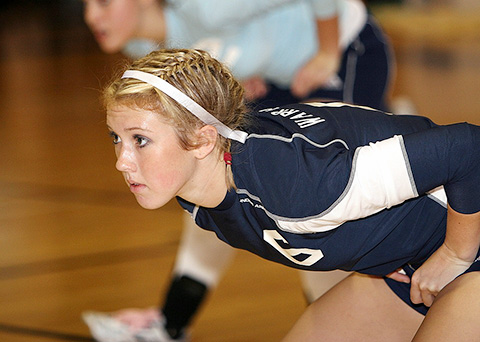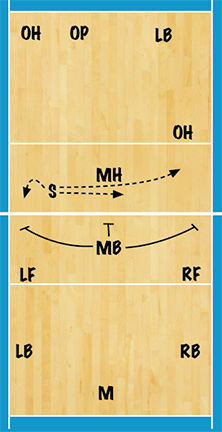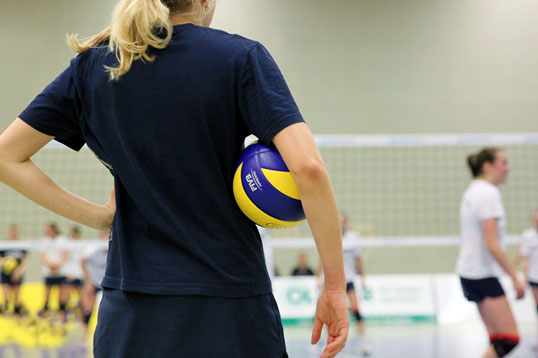Volleyball: Using your middle blocker
 Next to the libero, the middle blocker is the most important defensive player on the floor, said Mike Hebert, the successful former head women’s volleyball coach at the University of Minnesota. An awful lot of what goes on defensively is determined by the middle blocker.
Next to the libero, the middle blocker is the most important defensive player on the floor, said Mike Hebert, the successful former head women’s volleyball coach at the University of Minnesota. An awful lot of what goes on defensively is determined by the middle blocker.
The more athletic the middle blocker, the more ground she can cover, and the easier it is for the defense to get two blockers on the hitter. Of course, the goal of the offense is to isolate one blocker on a hitter, so the cat-and-mouse game between setter and middle blocker is ongoing.
Coaches usually come into a game with a plan in mind, but Hebert is more than willing to change if the situation calls for it. If a particular hitter is having a great game, then sometimes Hebert moves the middle blocker to focus on that hitter, which forces another offensive player to carry the load. In general, though, Hebert uses his middle blocker in three different ways, plus a fourth option that is more about instinct than strategy.Using your blocker
 DIAGRAM 1: Hard Front. The middle blocker follows the middle hitter wherever he or she goes. This is especially effective against a 3 or 31 set. One drawback is that this makes it much harder to get two blockers on the outside hitters.
DIAGRAM 1: Hard Front. The middle blocker follows the middle hitter wherever he or she goes. This is especially effective against a 3 or 31 set. One drawback is that this makes it much harder to get two blockers on the outside hitters.
 DIAGRAM 2: Soft Front. The middle blocker stays closer to the setter and moves with the set to block the middle hitter. By staying nearer to the setter, the middle blocker also can help on backset.
DIAGRAM 2: Soft Front. The middle blocker stays closer to the setter and moves with the set to block the middle hitter. By staying nearer to the setter, the middle blocker also can help on backset.
 DIAGRAM 3: Read Blocking. The middle blocker reads the set, tracks the pass and responds as ball is in the air. This option is vulnerable to quick sets.
DIAGRAM 3: Read Blocking. The middle blocker reads the set, tracks the pass and responds as ball is in the air. This option is vulnerable to quick sets.
The final option is a simple commit-block in which the middle blocker jumps to block the middle hitter before the set. Sometimes the coaches call this, but with older players, theyre free to commit-block whenever they feel a quick set is coming.




